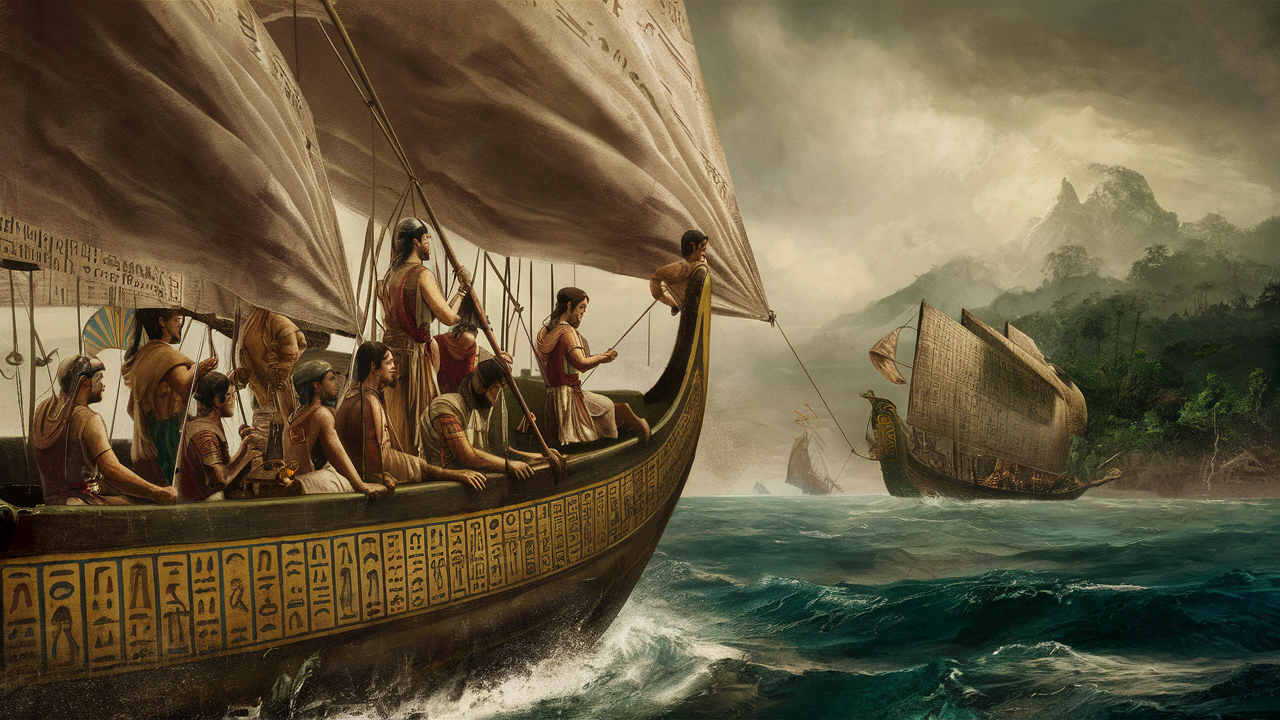Did Egyptians Travel To America?
Pyramid building from the ancient Egyptian in the American continents has been highly debated for many years with many scholars disagreeing with the same. Despite a lack of documented proof of contact between the Old and New World before Columbus’ discovery, enthusiasts of this theory refer to historical and archaeological findings to argue their case. Nonetheless, the majority of mainstream academics are inclined to consider this evidence as unreliable at best.
The most compelling proof used by theorists is the fact that tobacco and cocaine were found in some of the Egyptian mummies. Tobacco and coca plants are native only to the Americas, so how did traces of these substances end up in mummified human remains in another continent thousands of years ago? Some people believe that this proves the ancient Egyptians traveled to the New World and returned with foreign plants. However, skeptics argue that the traces could be due to post-discovery contamination or testing errors, and that is why the results need to be reproduced. While the traces of these substances are present in the samples, they are not sufficient evidence on their own.
They also may find cultural parallels between New World Egyptian and Old World Egyptian structures such as pyramids, mummification, sun worship, and artwork featuring gods or human-with-bones motifs. They suggest prehistoric inter-oceanic interaction and exchange of culture to account for these similarities. However, mainstream scholars argue that human societies themselves tend to share analogous traits in some ways, and the seemingly synchronistic occurrences can easily be attributed to basic human needs and values and experiences and not necessarily due to cultural diffusion over vast oceans. Most of the physical anthropologists and archeologists are skeptical regarding interactions between the ancient Egyptians and Americans.
Secondly, it is important to note that the narratives of ancient Egyptians arriving to the Americas are often linked to Thor Heyerdahl and his Ra Expeditions which he undertook across the Atlantic in the 1960s-70s using the boats constructed from reeds in accordance with the methods and technologies of the ancient Egyptian civilization. Heyerdahl was also able to prove that such crossings were technically possible through advanced seafarers of early civilizations. However, his journeys on the Ra boats were primarily to argue that theorized contact was not a impossibility given the constraints of the sailing technology of the time. Heyerdahl himself admitted that having achieved an experimental crossing it did not really demonstrate pre-Columbian Egyptian contact at all.
Many Egyptologists and archaeologists in the end tend to dismiss the theory that ancient Egyptians visited and colonized the Americas. He notes that the perceived plant traces, cultural similarities, and experimental reed boat journeys do not offer definitive evidence in their eyes. These academics need straightforward evidence of a pre-Columbian Egyptian presence in the Americas before shifting the prevailing historical narrative that no Egyptians arrived in the New World before Columbus’ 1492 voyage.
In the absence of broken artefact fragments that can be directly attributed to ancient Egyptians which were unearthed from unequivocal pre-Columbian layers of an archaeologically verified New World site, the thesis that ancient Egyptians crossed the Atlantic is going to remain more of an academic conjecture rather than a well-received and credible theory. As some would like to imagine that Ramessess II did indeed meet with the young America and vice versa, most scholars call for proper and scientifically proven evidence to rewrite history that does not currently contain credible examples of interactions between ancient Egyptians and Americans across the thousands of miles of ocean that separated the two continents at the times of the respective empires.
Did the ancient Egyptians actually travel and colonize the pre-Columbian Americas? However, until clearer evidence is presented to prove these contacts, the conventional academic logic seems to be no way, though much to the chagrin of some postmodernist thinkers. However with the newest discoveries in science and technology such as archaeology and DNA testing it is possible that in the future new proves may point to this theory and change the existing opinion of people to it as still a theory waiting for confirmation.
FAQ
Is there any archaeological evidence of ancient Egyptians in the Americas?
This is the most common question, as people are curious about concrete proof of Egyptian contact with the Americas.
What are the theories about how Egyptians might have traveled to the Americas?
People often explore different hypotheses about the possible methods of transportation Egyptians could have used.
Are there any similarities between Egyptian and American cultures that could suggest contact?
This question delves into cultural comparisons that might hint at a connection.
What is the mainstream consensus among historians and archaeologists on this topic?
People often seek the expert opinions on whether the theory of Egyptian travel to the Americas is widely accepted or dismissed.
What are some of the most famous artifacts or sites associated with the theory of Egyptian contact with the Americas?
This question highlights specific examples that proponents of the theory often reference.
Recent Blog
- Greece Travel Guide: Best Places to Visit
- Best Place to Visit in Hawaii: Top Destinations Revealed
- Hidden Gems: The 13 Most Beautiful Places on Earth
- Top Activities: Things to Do in Chicago
- Ultimate Guide: Top Things to Do in Nashville
- Best Place to Visit Europe: Top Destinations
- How to Travel Cheap in Europe: Budget-Friendly Tips and Tricks
- Can You Travel When Pregnant?
- Can You Travel North Korea?
- Can North Koreans Travel?

